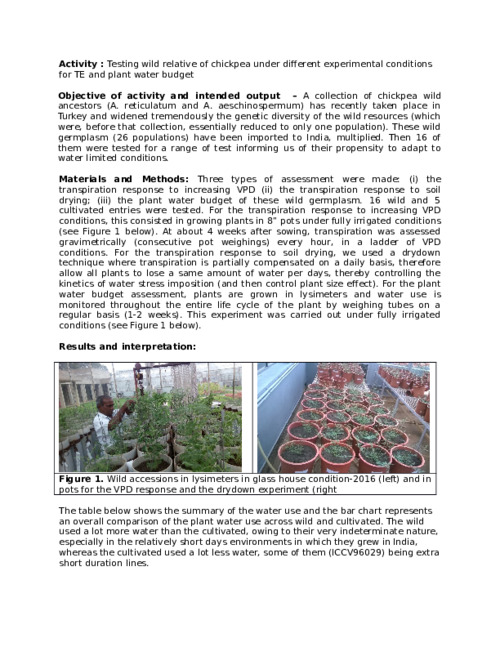Testing wild relative of chickpea under different experimental conditions for TE and plant water budget
Abstract
Three types of assessment were made: (i) the transpiration response to increasing VPD (ii) the transpiration response to soil drying; (iii) the plant water budget of these wild germplasm. 16 wild and 5 cultivated entries were tested. For the transpiration response to increasing VPD conditions, this consisted in growing plants in 8” pots under fully irrigated conditions (see Figure 1 below). At about 4 weeks after sowing, transpiration was assessed gravimetrically (consecutive pot weighings) every hour, in a ladder of VPD conditions. For the transpiration response to soil drying, we used a drydown technique where transpiration is partially compensated on a daily basis, therefore allow all plants to lose a same amount of water per days, thereby controlling the kinetics of water stress imposition (and then control plant size effect). For the plant water budget assessment, plants are grown in lysimeters and water use is monitored throughout the entire life cycle of the plant by weighing tubes on a regular basis (1-2 weeks). This experiment was carried out under fully irrigated conditions (see Figure 1 below)

